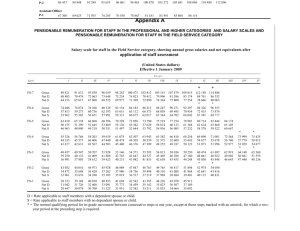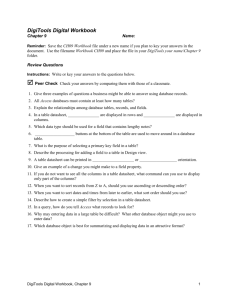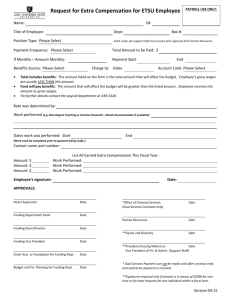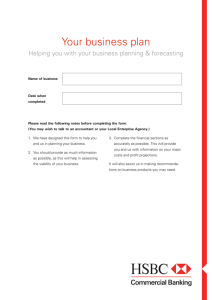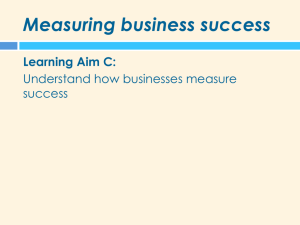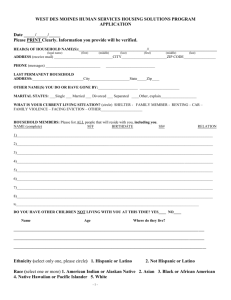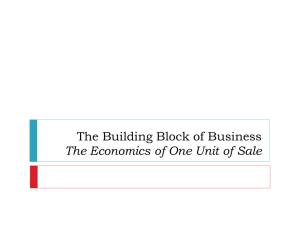Profit & Loss PPT
advertisement
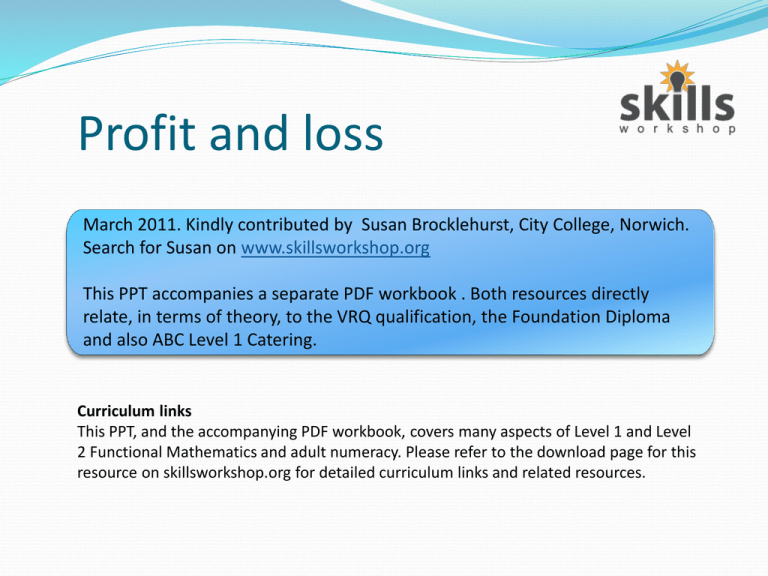
Profit and loss March 2011. Kindly contributed by Susan Brocklehurst, City College, Norwich. Search for Susan on www.skillsworkshop.org This PPT accompanies a separate PDF workbook . Both resources directly relate, in terms of theory, to the VRQ qualification, the Foundation Diploma and also ABC Level 1 Catering. Curriculum links This PPT, and the accompanying PDF workbook, covers many aspects of Level 1 and Level 2 Functional Mathematics and adult numeracy. Please refer to the download page for this resource on skillsworkshop.org for detailed curriculum links and related resources. Gross profit Gross profit = sales – cost of sales Discuss: what does this formula mean? Complete the examples in your workbook. Swap with a partner and check each other’s work Net profit Net profit = sales – all costs In pairs, write down a list of all other costs that you can think of in a hotel/restaurant operation Feedback to whole class Costs Costs can be divided into: Cost of sales Overheads Labour/wages Overheads Discuss in pairs which costs fall under the heading of overheads – think about bills that come through the letter box each month. Feedback to class Wages/labour Discuss in pairs which costs fall under the heading of wages/labour – think about all the costs associated with employing someone. Feedback to class Net profit Net profit = sales – all costs Complete the examples in your workbook. Swap with a partner and check each other’s work % gross profit All organisations will work to an agreed % gross profit For example, Dunston Hall works to 74%, the George Hotel to 72%. % gross profit = gross profit/selling price x 100% Using % gross profit to calculate how much to charge for a dish If a dish costs £3.20 to produce and % gross profit is 70% How much should you charge for this dish? How did you work this out? Can you show this in a formula?




